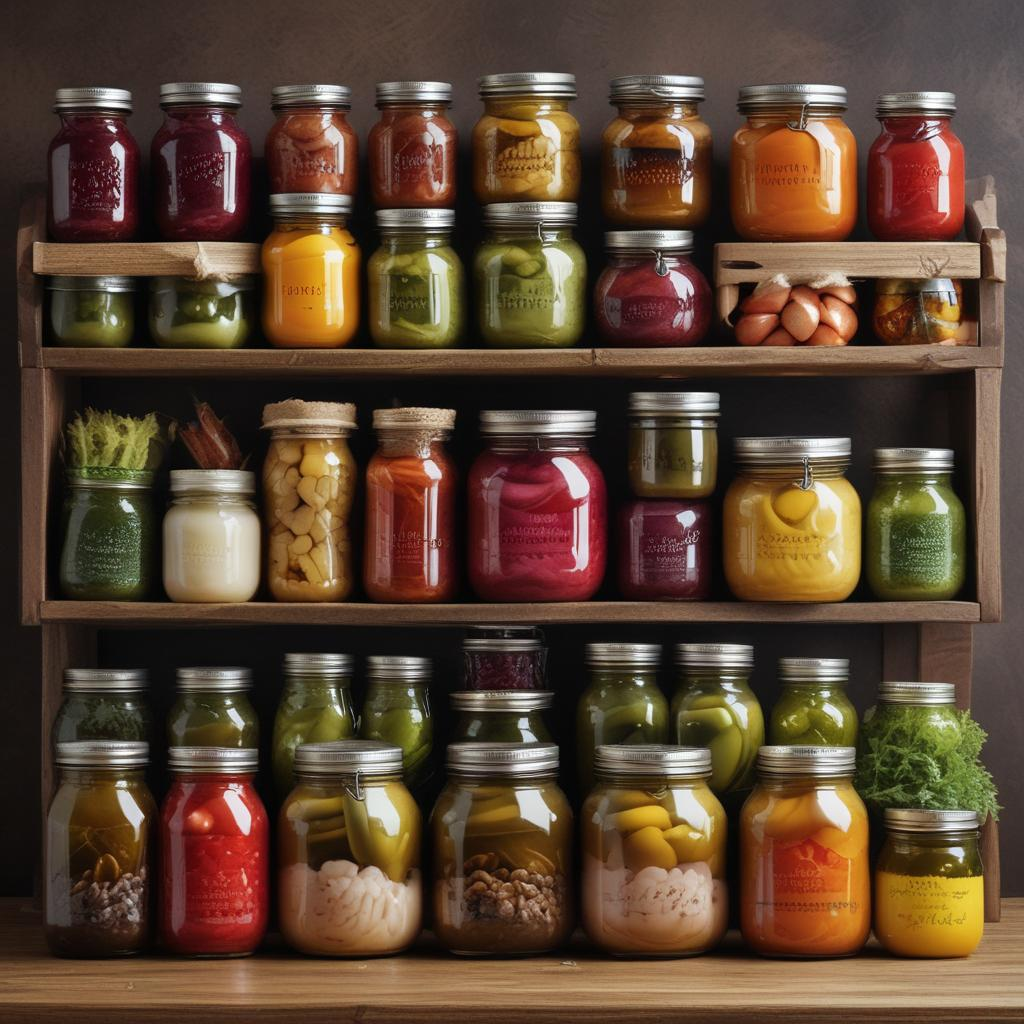Fermented Delicacies: Unveiling the Culinary Wonders
Fermented foods are a fascinating facet of global cuisine, offering not only unique flavors and textures but also well-documented health benefits. Across cultures and continents, fermentation techniques have been harnessed to transform simple ingredients into complex, flavorful dishes. Here, we explore some of the most intriguing fermented delicacies from around the world, guaranteed to delight the curious palate and maybe even challenge it.

1. Kimchi (Korea)
Perhaps one of the best-known examples of fermentation, kimchi is a staple in Korean cuisine and has gained international fame for its distinctive pungent flavor and health benefits. Made from cabbage and other vegetables mixed with seasonings such as chili pepper, garlic, ginger, and scallion, kimchi is not just a dish but a cultural icon. It is rich in vitamins, digestive-friendly lactobacilli bacteria, and can be enjoyed on its own or used as an ingredient in countless Korean dishes.
2. Sauerkraut (Germany)
Originally from China but popularized by the Germans, sauerkraut is made by fermenting finely cut cabbage with various lactic acid bacteria. The result is a tangy treat that pairs splendidly with meats and sausages, offering a crisp, acidic counterpoint. Sauerkraut is not only rich in fiber but also vitamins C and K, and studies suggest it has properties that aid in boosting the immune system.
3. Natto (Japan)
Natto might challenge uninitiated palates with its potent smell and sticky texture, but this Japanese breakfast staple made from fermented soybeans is a superfood high in protein, vitamins, and minerals. It’s typically served with rice, and seasoned with mustard, chives, or soy sauce. The fermentation process produces nattokinase, an enzyme that is believed to help reduce blood clotting and improve cardiovascular health.
4. Kefir (Eastern Europe and Southwest Asia)
Kefir is a fermented milk drink similar to a thin yogurt, originating from the Northern Caucasus. The fermentation is achieved using kefir grains, which are a combination of lactic acid bacteria and yeast in a matrix of proteins, lipids, and sugars. This probiotic-rich beverage is known for its benefits in digestive health and has been linked to various health benefits, including improved bone health and enhanced immune function.
5. Tempeh (Indonesia)
Originating from Indonesia, tempeh is made by fermenting soybeans with a specific type of mold. The result is a firm, nutty cake that’s a popular protein source among vegans and vegetarians. Tempeh is not only rich in protein but also high in fiber, vitamins, and minerals. Its robust texture and earthy flavor make it ideal for a variety of dishes, from stir-fries to sandwiches.
6. Miso (Japan)
Miso is a traditional Japanese seasoning produced by fermenting soybeans with salt and a fungus known as koji. Often used in miso soup, this thick paste can vary in color and flavor depending on its fermentation duration. In addition to providing a umami kick to dishes, miso is revered for its health benefits, including reducing risk factors for heart disease and promoting digestion.
7. Pickles (Multiple cultures)
Cucumbers are most commonly associated with pickles in the West, but around the world, pickling extends to countless vegetables and even fruits. The fermentation not only preserves these foods but also imbues them with entirely new flavors. Rich in probiotics, homemade pickles without vinegar (using brine instead) offer numerous health benefits, including improved digestive health.
8. Sourdough Bread (Middle East/Europe)
Unlike ordinary bread made with yeast, sourdough involves a natural fermentation process that uses a ‘starter’ culture of flour and water. This fermentation creates lactic acid, which imparts a subtle sour taste. Sourdough bread is easier to digest than standard bread and is lauded for its prebiotic content and lower gluten levels.
9. Kvass (Eastern Europe)
Kvass is traditionally made from rye bread, which gives it a unique flavor profile. This slightly alcoholic drink is achieved through the natural fermentation of bread with yeast and water. Often flavored with fruits or herbs, kvass is known for its probiotic properties and is often heralded as a tonic for digestion and overall wellness.
10. Puto (Philippines)
Puto is a type of steamed rice cake originally from the Philippines which is somewhat sour due to its fermentation process. Traditionally eaten as a snack or with savory dishes such as dinuguan (pork blood stew), puto's production involves fermenting rice dough, making it another example of fermentation's versatile role in global cuisines.
Fermented foods and drinks not only offer an array of unique flavors and textures, but also host a plethora of health benefits due to their rich probiotic content. Exploring fermented delicacies can expand your culinary horizons while contributing to a healthier diet.


.jpg)




.jpg)




.png)
0 Comments